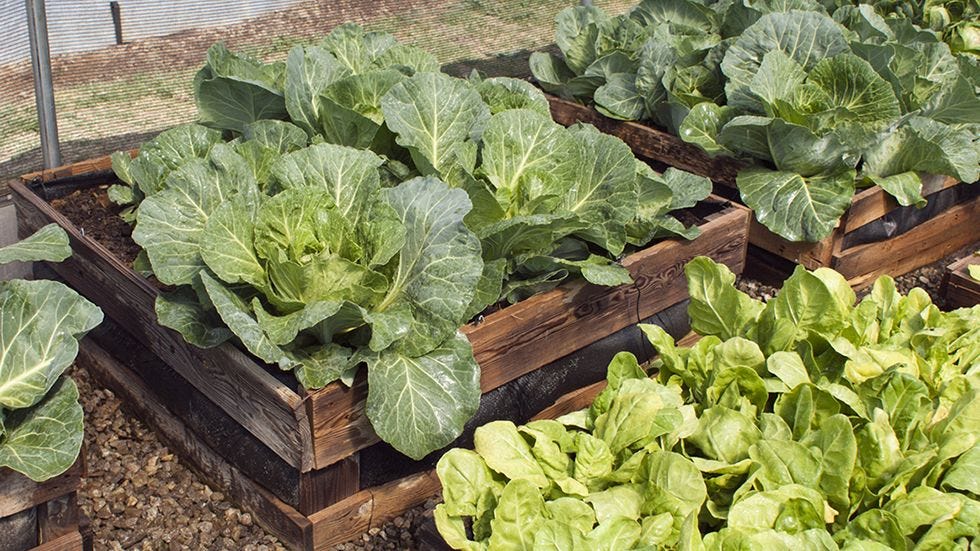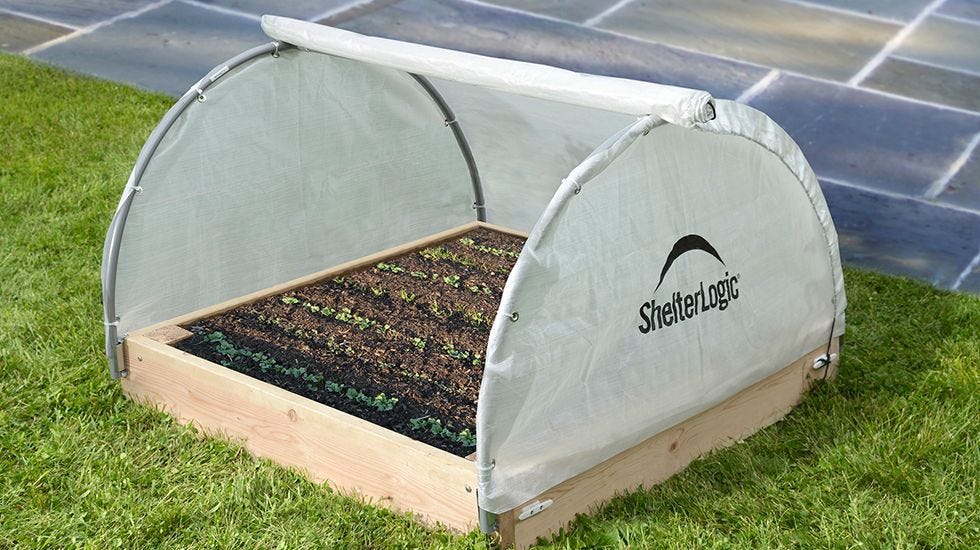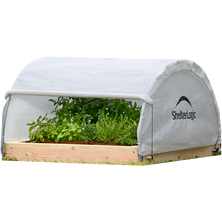Happy spring! In our recent Early Spring Gardening Tips blog, we recommend a few great tools to help you start planting as soon as possible and extend your growing season. One innovative item mentioned is the raised bed greenhouse (or mini-greenhouse). Here, we’ll explain in more detail the benefits to these structures, what you can plant in them, and more.
What’s a Raised Bed Greenhouse and Why Should You Use One?
To put it simply, a raised bed greenhouse combines the compact design of a raised bed and the temperature-controlling enclosure of a greenhouse. These structures consist of a translucent fabric cover that attaches to your raised bed. A raised bed greenhouse’s unique design creates an optimum growing environment for seedlings even in the early stages of spring. Raised beds provide a portable structure filled with loose, aerated soil that eliminates the hassles of weeds, unwelcome critters, or frozen ground when planting. The greenhouse cover ensures temperature control with sufficient airflow so plants can grow in an ideal climate. With a raised bed greenhouse, plants get just enough sunlight, heat, and ventilation in order to grow more efficiently.

Here are a few more benefits of planting in a raised bed greenhouse:
- Portability/More Location Options. A raised bed greenhouse allows you to plant virtually anywhere on your property. Because raised beds offer an elevated and portable terrain, tree roots, large rocks, or even lack of optimal planting space won’t affect your ability to garden. A raised bed greenhouse provides the warmth and heat entrapment of a greenhouse in a compact and mobile solution.
- Better Soil. When planting in the ground with a simple cover to keep plants warm, you miss out on the benefits of a raised bed greenhouse. Planting in the ground runs the risk of soil that has poor drainage, too much compaction, or lacks an ideal pH balance. Not to mention, regular planting involves added nuisances such as weeds, insects, and more to manage. A raised bed greenhouse eliminates these issues because it’s filled with fresher and often healthier soil. Raised beds can be filled with organic compost or fertilizer, allowing your plants to start their journey in soil that’s loose, clean, and beneficial for them.
- Less Physical Work. Raised beds remove grueling gardening tasks including weed-pulling, tilling the ground, and even time spent bending over your garden bed. With a raised bed greenhouse, you spend less time tending to plants because plants are contained in optimal conditions, requiring less work on your end. Raised bed greenhouses make gardening an easier outdoor pastime for anyone.
Planting in Your Raised Bed Greenhouse in Early Spring

So what can you begin to plant in your raised bed greenhouse in the early spring season? It’s always important to note your climate and planting zone will affect your seasonal capabilities. Luckily though, a raised bed greenhouse offers more protection for budding plants. You'll no longer have to stress over the repercussions of unpredictable weather. See below what seeds you can start now.
- Cool Weather Crops. For most regions at the start of spring, choose cool weather crops to start in your raised bed greenhouse. Broccoli, cabbage, and cauliflower are just a few examples that can withstand temperatures just below or at freezing. These seedlings grow safely in your structure even in the much colder evenings.
- Warm Weather Crops. In more agreeable climate locations, you can also start warm weather crops in your greenhouse. As long as freezing temperatures have passed, you can begin to plant tomatoes, cucumbers, peppers, peas, and more.
- Root vegetables, leafy greens, and more. Overall, plants that flourish in well-drained, loose, and rock-free soil will benefit from growing in a raised bed greenhouse. Carrots and radishes need ample space for their long roots to spread without rocks and debris interrupting. Kale and lettuce don’t do well in soppy soil, and a raised bed provides sufficient drainage for just enough moisture. Regardless of what you grow, a raised bed greenhouse almost always provides a better environment for optimum plant growth.
A Few Tips to Keep in Mind
Pick a good location. Place your raised bed greenhouse in a spot that ensures plants receive sufficient sunlight each day. You want your greenhouse enclosure to effectively trap heat throughout the day. Also, if your raised bed isn’t particularly deep, you may want to remove grass or perennial weeds under it so larger roots can grow without any issues. Don't overcrowd plants. Whatever you choose to plant in your raised bed, resist the urge to overcrowd plants. Plants need space for their roots to spread and effectively retrieve nutrients from soil without stealing it from others growing nearby. With a contained space such as a raised bed, you need to ensure each plant has sufficient room to thrive. Try Companion Planting. Based on the previous tip, maximize space by choosing crops that complement each other in the growing process. Planting certain vegetables next to each other can help repel insects, suppress weeds, and provide heat or wind protection. Check out these companion planting combinations to learn which plants benefit by growing together.
GrowIT Raised Bed Greenhouses
Now that you’ve got a good idea of the benefits, what to plant, and how to maximize your raised bed greenhouse, it’s time to start planting! Utilize a GrowIT Raised Bed Greenhouse with your raised bed garden to protect plants as optimize growth. See our options: 



